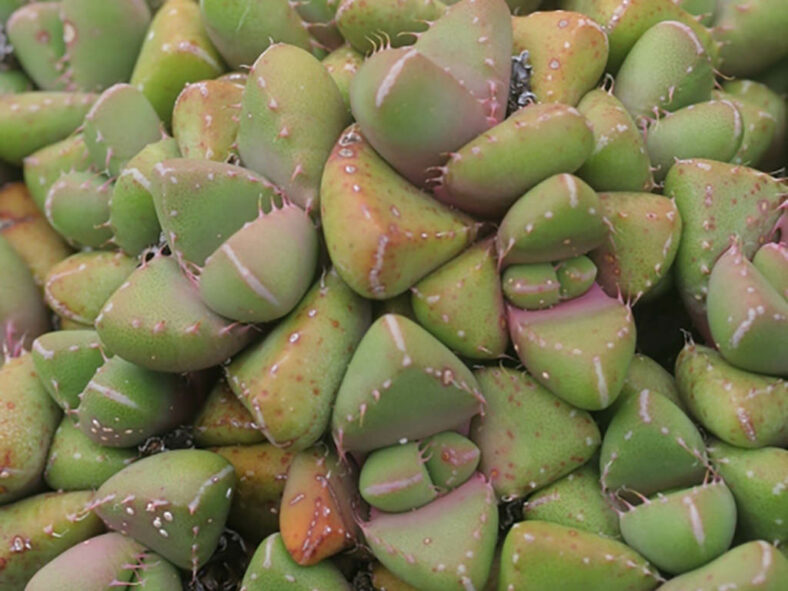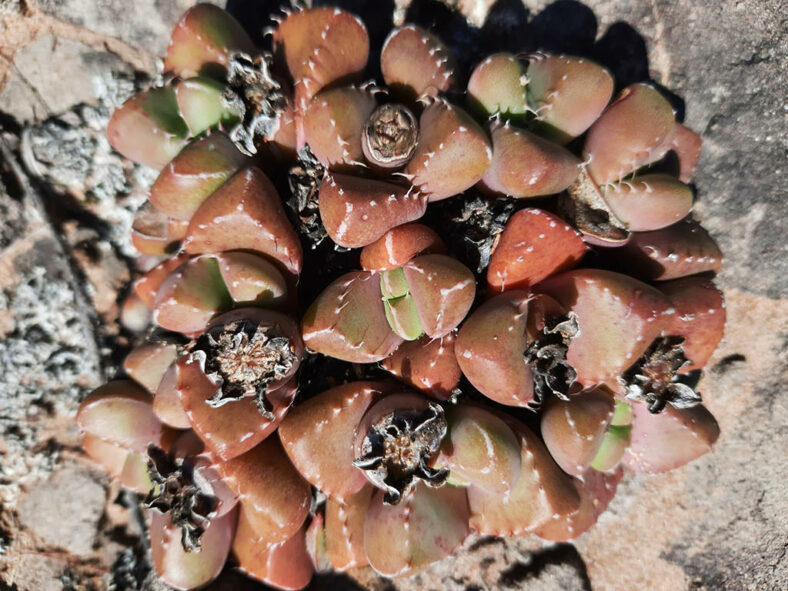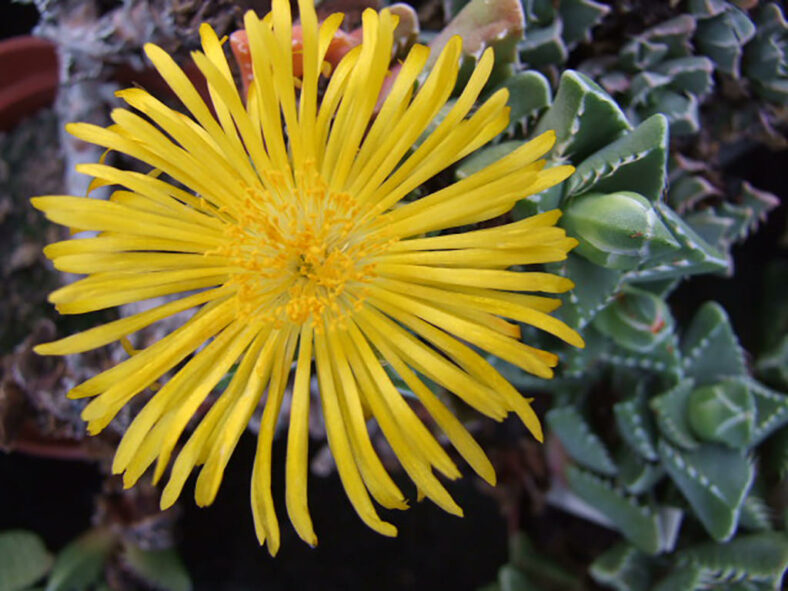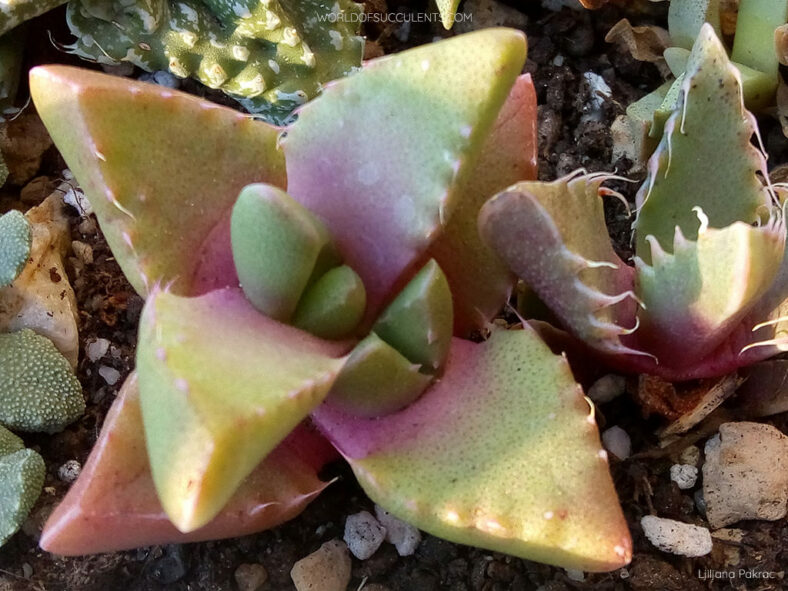Scientific Name
Faucaria subintegra L.Bolus
Synonym(s)
Faucaria subindurata
Scientific Classification
Family: Aizoaceae
Subfamily: Ruschioideae
Tribe: Ruschieae
Genus: Faucaria
Etymology
The specific epithet "subintegra (pronounced sub-in-TEG-ruh)" means "almost entire" and refers to the nearly toothless margins of the leaves, compared to the strongly toothed leaves of other species of the genus.
Origin
Faucaria subintegra is native to South Africa. It occurs in the most south-central part of the Eastern Cape, growing in full sun on top of north-facing river banks and cavities in rock plates in sandstone rocks.
Description
Faucaria subintegra is a small, clump-forming succulent with 4 to 8 very thick, crowded leaves with margins having very short, conical (sometimes absent) teeth with short bristles that disappear in older leaves. It develops short stems with age. The leaves are ovate-rhomboid, bluntly keeled at the top, and can measure up to 1.4 inches (3.5 cm) long and 0.6 inches (1.5 cm) wide. They are glaucous, often shiny, with tiny white dots and sometimes a violet hue. The margins and keels are indistinctly whitish.
The yellow, daisy-like flowers, which appear in the fall, can reach up to 1.8 inches (4.5 cm) in diameter. They have 80 to 92 linear petals and 150 to 180 stamens. The fruits are capsules tightly attached to the plant. They contain dark brown seeds and can grow up to 0.4 inches (1 cm) long and 0.5 inches (1.2 cm) in diameter.

How to Grow and Care for Faucaria subintegra
Light: For optimal growth, F. subintegra must receive at least six hours of direct sunlight daily. A sunny windowsill is a great spot to grow it indoors. However, moving it outside during the growing season (spring to fall) will provide the required light.
Soil: Use commercial succulent soils or make your own well-draining soil to ensure your F. subintegra thrives.
Temperature: This plant enjoys higher temperatures during the summer and will even survive a light frost. F. subintegra can withstand temperatures as low as 25 °F (-3.9 °C). USDA Plant Hardiness Zones 9b to 11b, 25 to 50 °F (-3.9 to 10 °C).
Watering: For optimal growth, water deeply and allow the soil to dry out before watering again. F. subintegra requires little or no water during the winter dormancy period. Wrinkled leaves are a sign that your plant needs water.
Fertilizing: To support healthy plant growth, fertilize once or twice during the active growing season with a water-soluble fertilizer diluted to half the recommended strength. Do not fertilize in winter.
Repotting: F. subintegra does not require frequent repotting. It should be repotted only when it has outgrown its container, which is approximately every two years. The best time to repot is early spring, just before the plant's growing season starts.
Propagation: This plant propagates easily from seeds and cuttings. Sow the seeds in well-draining soil in spring. If you prefer to use cuttings, the best time is late spring or early summer.
Learn more at How to Grow and Care for Faucaria.
Toxicity of Faucaria subintegra
F. subintegra is non-toxic to humans and pets.
Links
- Back to genus Faucaria
- Succupedia: Browse succulents by Scientific Name, Common Name, Genus, Family, USDA Hardiness Zone, Origin, or cacti by Genus
Photo Gallery
Click on a photo to see a larger version.


